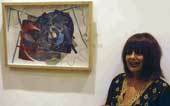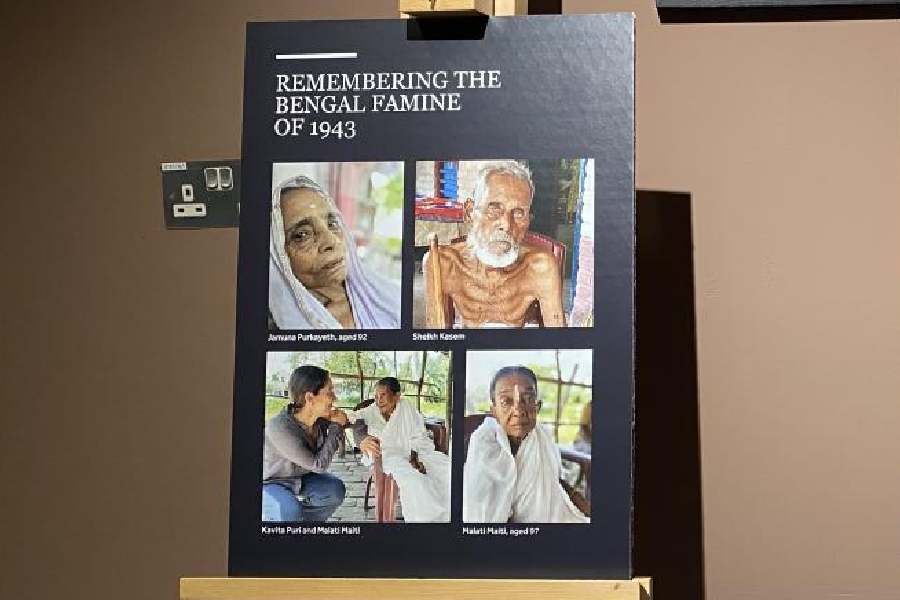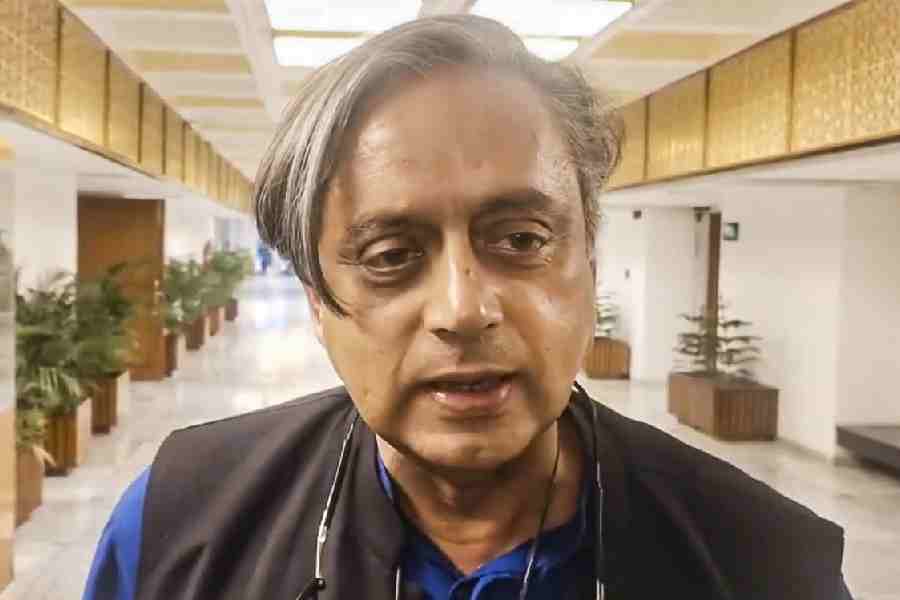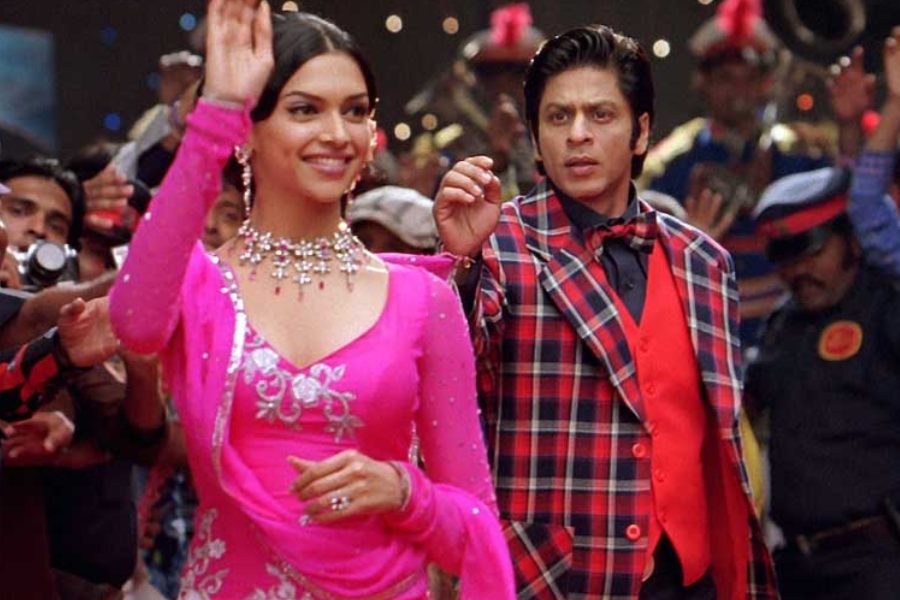 |
| Anita Gopal in front of one of his works at Studio 21. Picture by Bishwarup Dutta |
With her strikingly made-up face Anita Gopal stands out on Calcutta’s staid art scene, and certainly did so at the opening of her first show in Calcutta at Studio 21 on Friday evening.
Warm, bubbly and voluble, she let out that she was born in Calcutta of mixed parentage, was trained in visual art in England, and did a stint in fashion designing and interiors as well. She explained how she used the concept of “fractals” to create the works she is exhibiting here. Art lovers may find this use of scientific terminology forbidding, but actually the idea is simple enough. Without going into the theory part of it, suffice it say in Gopal’s words: Even when something looks amorphous, it actually has a form. Clouds, for example, may look just woolly or feathery, but even these have a structure. The original form keeps replicating itself, but the size gets smaller and smaller every time.
But again, it is easier to understand her delightful work that is so different from what we are used to seeing in galleries here by just looking at it. At first they may seem like collage, which in a way they are, but they are also a lot more. To begin with they are light and feminine, at least most of them are. One look at them and it is obvious that these are works of an artist well acquainted with the world of fashion and jewellery. She actually uses cut-outs from magazines, perhaps from advertisements, in most cases the merest sliver with a hint of velvet here or a diamond there. They also suggest a spray of flowers elegantly stretched across a frame.
These ribbons of paper are pasted on a white background in loops or strands like the fascinating streamers of DNA. But the paper cut-outs are not pasted flat. They stand up like pictures in pop-up books, and they are not as simple as they look. One needs to possess the skills of a master tailor and the imagination and sensibility of a jeweller and artist combined to create these delicate works.
Often she creates complex multi-layered works, playing with what looks like the popular motif of a betel-leaf-shaped heart. The red heart lies amid a cluster of grey cut-outs that create the impression of the organ having sprouted wings, or that it has turned into a vegetable that can be peeled like an onion or a cabbage. It could also have been the concoction of a fashion designer who creates fantasy clothes that are neither utilitarian nor wearable.
In one work, there is a glimpse of the façade of a highrise building and a cut-out of a woman in a swimsuit and gloves. In another, two large textured black “wings” of paper are spread across the page with a sticker from Harrods, the luxury department store, pasted in the middle. This work has the quality of architecture.
Gopal’s work is difficult to pin down, or make generalisations about, for in another work, the cut-outs look like camera lenses opening and shutting, or even a fireworks display. One is free to use one’s imagination and discover shapes that one wants to.










